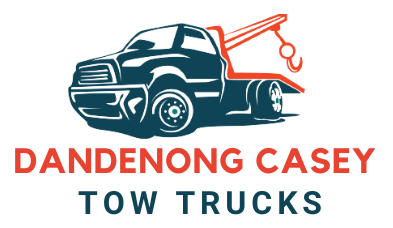Heavy-duty towing is a critical service that plays a vital role in transporting large and heavy vehicles in the event of breakdowns or accidents. As the industry continues to evolve and advance, new technologies and techniques are being introduced to enhance safety, efficiency, and customer satisfaction, from specialized equipment to innovative recovery methods; the future of heavy-duty towing looks bright and full of possibilities.
Whether you’re a tow truck operator or simply someone who may one day need these services, this post is for you. In this blog post, we’ll explore how heavy-duty towing is changing and what these advancements mean for the industry and for those in need of these services. So let’s dive in and see how heavy-duty towing is changing and evolving.
The History Of Heavy-Duty Towing
The history of heavy-duty towing dates back to the early 20th century, when the first tow trucks were introduced to help transport disabled vehicles. In the mid-20th century, hydraulic lifts were introduced, allowing tow trucks to lift and transport vehicles using hydraulic power rather than manual labour.
This marked a significant advancement in the towing industry, allowing for the safe and efficient transportation of even heavier vehicles. Today, heavy-duty towing encompasses a wide range of specialized equipment and techniques, including flatbed tow trailers, rotators, and heavy-duty wreckers.
As the needs of the industry have evolved, so too has the technology and equipment used in heavy-duty towing. From its humble beginnings as a simple flatbed truck with a winch, heavy-duty towing has become a complex and specialized field that plays a vital role in transporting large and heavy vehicles.
Improved Recovery Methods
One significant advancement in recovery methods has been the development of specialized equipment such as lowboy and flatbed trailers and heavy-duty tow trucks. These tools allow for the safe and efficient transportation of a wide range of vehicles, from semi-trucks and buses to construction equipment and military vehicles.
In addition to specialized equipment, the heavy-duty towing industry has also benefited from the integration of technology in recovery operations. This includes the use of GPS tracking and communication systems, as well as the implementation of computer-aided dispatch and dispatch software. These technologies allow for more efficient and effective recovery operation coordination, helping streamline the process and reduce response times.
The Impact Of Technology On Heavy-Duty Towing
Technology has had a significant impact on the heavy-duty towing industry, helping to improve safety, efficiency, and customer satisfaction. Some examples of how technology has impacted heavy-duty towing include:
- GPS tracking and communication systems: These technologies allow tow truck operators to track their vehicles’ location and communicate with dispatch and other team members.
- Computer-aided dispatch and dispatch software: These tools allow dispatchers to quickly and accurately assign tasks and track the progress of recovery operations. This helps streamline the process and improve efficiency.
- Specialized equipment: Technological advances have also led to the development of specialized equipment, such as lowboy trailers and heavy-duty wreckers. These tools allow for the safe and efficient transportation of a wide range of vehicles, from semi-trucks and buses to construction equipment and military vehicles.
Overall, the impact of technology on the heavy-duty towing industry has been significant, helping to improve safety, efficiency, and customer satisfaction.
Future Trends In Heavy-Duty Towing
As the heavy-duty towing industry continues to evolve and adapt to new technologies, several trends will likely emerge in the coming years. Some potential future trends in heavy-duty towing include:
Continued integration of technology: The heavy-duty towing industry will likely continue to adopt and integrate new technologies to improve safety, efficiency, and customer satisfaction. This may include the use of advanced communication and tracking systems and the development of new specialized equipment.
Greater emphasis on sustainability and environmental responsibility: As concerns about the environment continue to grow, the heavy-duty towing industry may place a greater focus on sustainability and environmental responsibility.
Increased demand for heavy-duty towing services: As the global economy continues to grow and the need for transportation increases, it is likely that the heavy-duty towing industry will see an increase in demand for their services.
A Full-Service Towing Melbourne Company in Melbourne South Eastern Suburbs.
Our Services
- Car Towing
- Van Towing
- Truck Towing
- Emergency Towing
- 24/7 Towing
- Motorcycle Towing
- Cheap Towing
- Old Car Removal
- Junk Car Removal
- Boat Towing
- Bus Towing
- Clearway Towing
- Accident Towing
- Caravan Towing
- Trailers Towing
- Parking Towing
- 4WD Towing
- Limousine Towing
Need to tow your vehicle immediately?
Dandenong Casey Tow Trucks is located near the Cranbourne, Victoria 3977. Please check the below map.

Dandenong Casey Tow Trucks
50 Fitzgerald Road
Hallam VIC 3803
(03) 7042 2011
https://www.dandenongcaseytowtrucks.com.au
https://www.facebook.com/DandenongCaseyTowTrucks
https://www.pinterest.com/dandenongcaseytowtrucks/
https://twitter.com/DandenongTowing

Recent Comments